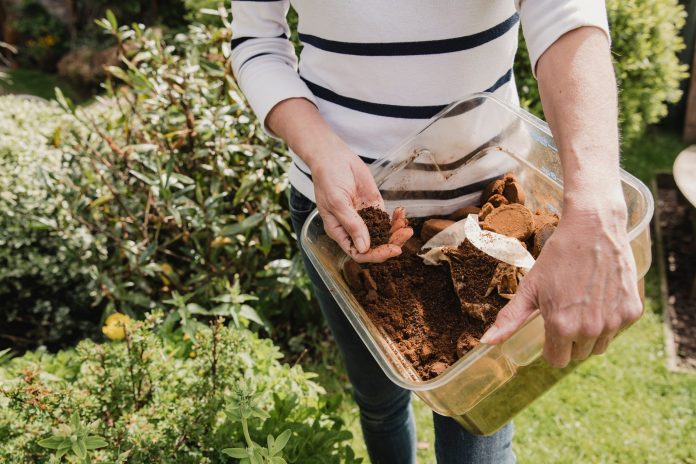AUBURN UNIVERSITY, Ala. – After enjoying a hot cup of joe in the morning, what can be done with all the used coffee grounds? Throwing them away just creates extra waste to dispose of later. Instead of aiming for the trashcan, shoot straight for the garden instead. There are several creative ways to reuse coffee grounds in the garden.
Usage
Bethany O’Rear, an Alabama Extension home grounds, gardens and home pests regional agent, said coffee grounds can be used in the garden as mulch, or as a great addition to the compost pile. Not only does coffee fuel you, but it can fuel your plants as well.
Mulch
Used coffee grounds are great to use as a mulch for the garden. However, in order to use them as mulch, gardeners will have to add an extra layer of another mulching material.
“The additional layer prevents the coffee grounds from becoming compacted,” O’Rear said.
First, add approximately half an inch of grounds as the first layer. Both freshly used grounds and composted grounds can be used for the mulch. Then, add another layer of organic mulch, such as pine straw or pine bark, on top of the grounds.
Composting
In addition to being used for mulch, coffee grounds are a good addition to composting piles. According to O’Rear, using grounds in composting is typically the most commonly used method for reusing coffee grounds for garden purposes. This compost can in-turn be used as mulch, as mentioned above, or as an addition to garden soils to add needed nutrients. Simply add their freshly used grounds to the compost pile. While coffee grounds can be added directly to garden soils, O’Rear said it is better to use ones that have been composted.
Benefits
While reducing waste is one of the perks of using these grounds, they also provide numerous benefits for plants. Coffee grounds contain nutrients essential for plant growth. These nutrients include nitrogen, phosphorus and potassium.
“They also contribute some micronutrients such as magnesium, copper and calcium,” she said.
With nitrogen, only a small portion is immediately available to plants. However, as microorganisms break down the grounds, the nitrogen is converted into a usable form. This provides a steady supply of fertilizer.
“The largest potential benefit of using coffee grounds is the improvement to soil structure,” O’Rear said. “Improving soil structure is important because it can allow more pore space and break up compacted layers.”
Lastly, the grounds also provide a healthy soil pH level for plants. The grounds have a slightly acidic pH of around 6.2 – 6.8. Most plants thrive in this pH range.






















